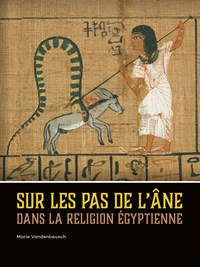| Main » Ad Board » ДРЕВЕН ЕГИПЕТ И АФРИКА » Религия и философия |
| 06.11.2020, 16:29 | |
В продължение на хилядолетия магарето е верен помощник на древноегипетския селянин, като скромно и упорито го подпомага в неговата работа - буквално изнасяйки на гърба си великолепието на тази величествена цивилизация. Затова и не е чудно, че то намира своето запазено място и в религията. Колкото и да е чудно, то е животно, посветено на бога на пустините и чуждите земи Сет - зло по презумпция (поне в късните епохи) божество, враг и убиец на първия митичен владетел Озирис. Въпреки това неговите аспекти не са само негативни. В редица магически папируси се призовава неговата помощ и то е възприемано като покровител, надарен със свръхестествени сили. Разкривайки цялото това разнообразие от прояви на дългоухия любимец, този том ни кани на вълнуващо пътешествие по стъпките на магарето в необятния свят на древноегипетската религия. Marie Vandenbeusch - Sur les pas de l'âne dans la religion égyptienne, Leiden, Sidestone Press, 2020 - на френски език, от Academia.Edu, формат PDF.Сваляне с ляв бутон (downloading by left button) и после през бутона Download. Academia.Edu изисква регистрация или влизане през Фейсбук/Google акаунт за сваляне на файловете/ Academia.Edu needs a registration (you can use the Facebook or Google account) for downloading.АЛТЕРНАТИВЕН ЛИНК / ALTERNATIVE LINK: Marie Vandenbeusch - Sur les pas de l'âne dans la religion égyptienne, Leiden, Sidestone Press, 2020 - на френски език, от Google Drive, формат PDF. Сваляне с ляв бутон (downloading by left button) от страницата на предоставящия сървър, после през бутона стрелка надолу/after by down arrow button.
| |
| Views: 1109 | Placed till: 06.12.2020 | Rating: 0.0/0 | |

